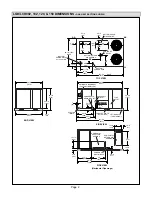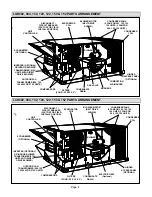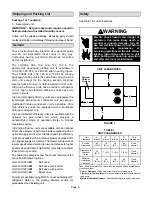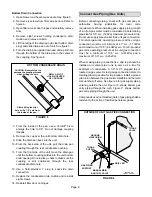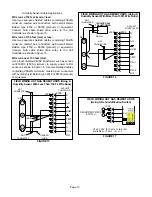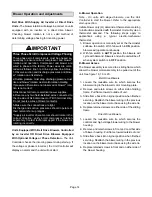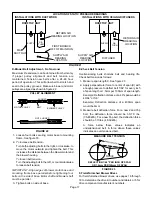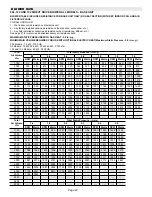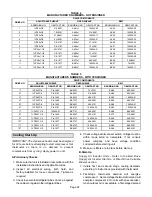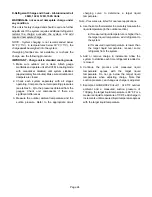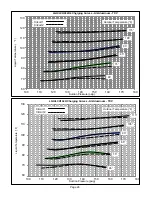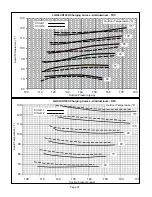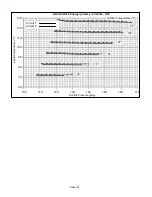
Page 16
DIRECT DRIVE BLOWER ASSEMBLY
FIGURE 20
INLET
GRID
REMOVE TWO SCREWS
ON EACH SIDE TO SLIDE
BLOWER OUT OF UNIT
BLOWER
HOUSING
BLOWER MOTOR
SECURED TO THIS
SIDE OF HOUSING
C-Determining Unit CFM
Belt Drive Blowers Controlled By An Inverter
IMPORTANT - Belt-driven inverter units are factory-set to
run the blower at full speed (60Hz) when there is a blower
(G) demand without a heating or cooling demand. Refer
to the field-provided, design specified CFM for all modes
of operation. Use the following procedure to adjust motor
pulley to deliver the highest CFM called for in the design
spec. See Inverter Start-Up section to set blower speeds
for all modes once the motor pulley is set.
IMPORTANT - Direct drive variable blower unit CFM is
determined by the Unit Controller. Refer to the Direct
Drive Variable Speed Start-Up section.
1- The following measurements must be made with a
dry indoor coil. Run blower (G demand) without a
cooling demand. Measure the indoor blower shaft
RPM. Air filters must be in place when measurements
are taken.
2- With all access panels in place, measure static
pressure external to unit (from supply to return).
Blower performance data is based on static pressure
readings taken in locations shown in figure 21.
Note - Static pressure readings can vary if not taken
where shown.
3- Referring to pages 19 through 22, use static pressure
and RPM readings to determine unit CFM. Apply
accessory air resistance tables when installing units
with any of the optional accessories listed.
NOTE - The minimum air volume required for use with
optional electric heat (maximum static pressure - 2.0
in.w.g) is 2800 CFM for 7.5Kw, 15Kw, 22.5Kw, 30Kw and
45Kw and 4000 CFM for 60Kw.
4-
Blowers Without Belt Tensioner-
The blower RPM can be adjusted at the motor pulley.
Loosen Allen screw and turn adjustable pulley
clockwise to increase CFM. Turn counterclockwise to
decrease CFM. See figure 18. Do not exceed
minimum and maximum number of pulley turns as
shown in table 3.
Blowers Equipped With Belt Tensioner-
Refer to label on motor base. See figure 19.
TABLE 3
MINIMUM AND MAXIMUM PULLEY ADJUSTMENT
Belt
Minimum
Turns Open
Maximum
Turns Open
A Section
0
5
B Section
1*
6
*No minimum turns open when B belt is used on pulleys 6” O.D. or larger.

